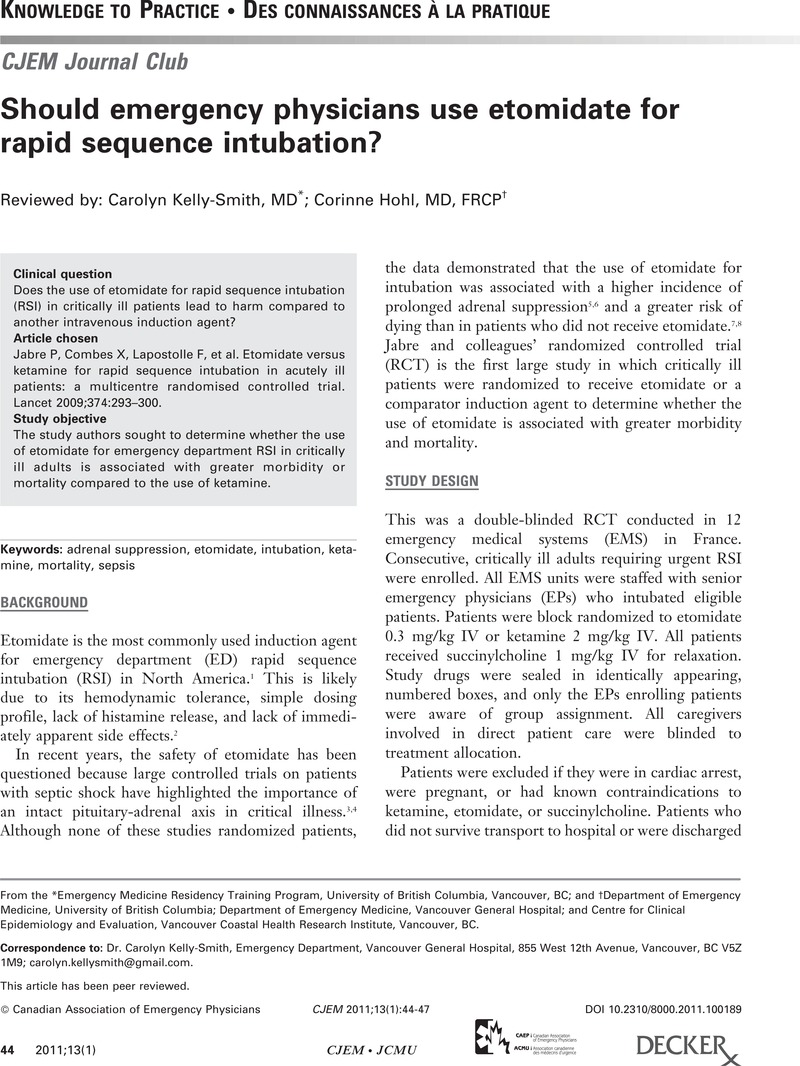Crossref Citations
This article has been cited by the following publications. This list is generated based on data provided by Crossref.
Green, Robert
Hutton, Brian
Lorette, Jason
Bleskie, Dominique
Mclntyre, Lauralyn
and
Fergusson, Dean
2014.
Incidence of postintubation hemodynamic instability associated with emergent intubations performed outside the operating room: a systematic review.
CJEM,
Vol. 16,
Issue. 01,
p.
69.



